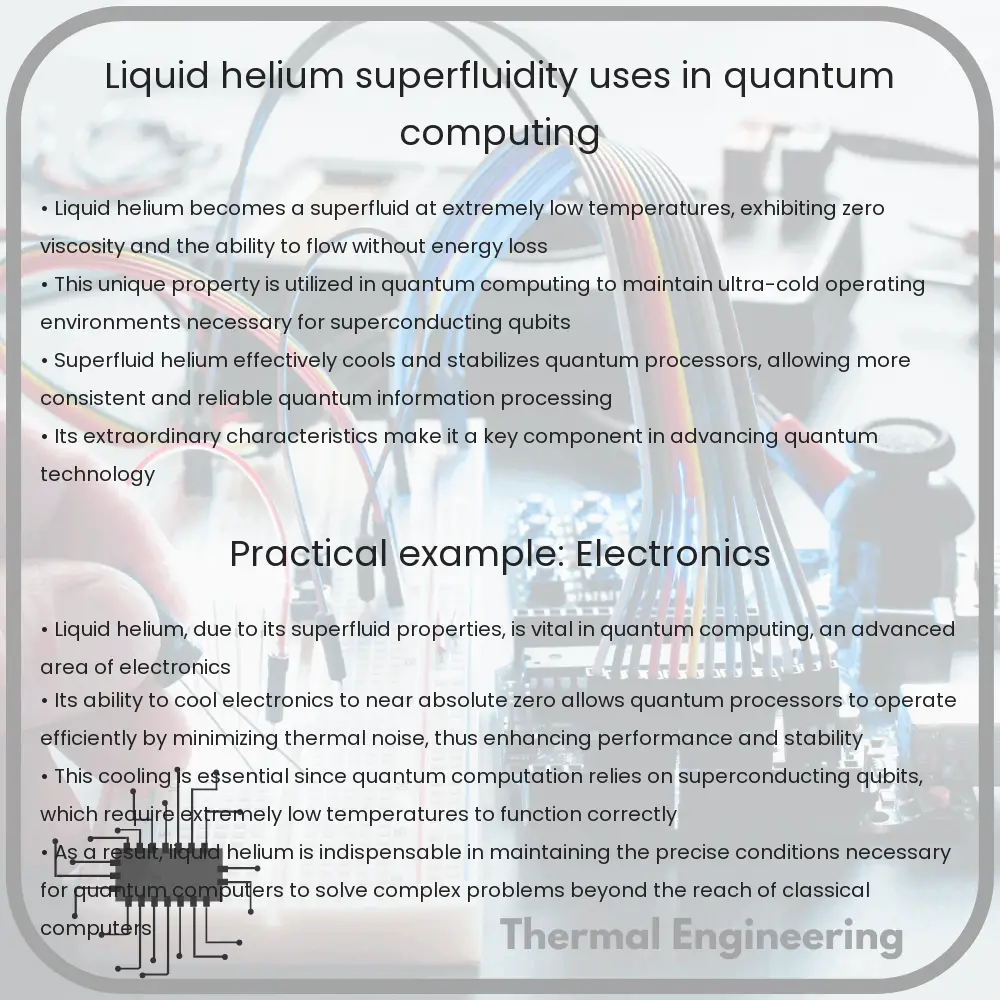Liquid helium is explored as a superfluid with zero viscosity, crucial for quantum computing by providing ultra-cold conditions for qubits.

Liquid Helium and Superfluidity
Liquid helium, a substance that showcases some of the most intriguing behaviors at extremely low temperatures, is a cornerstone in the study of quantum mechanics. Existing in two isotopic forms, helium-3 (^3He) and helium-4 (^4He), its most remarkable property is observed in helium-4 when it transforms into a superfluid state. This transformation occurs at temperatures below 2.17 K (-270.98°C), a phase transition known as the Lambda Point, where the liquid displays zero viscosity and the ability to flow without any energy loss.
Understanding Superfluidity
Superfluidity is a phase of matter where the fluid has no viscosity. In terms of helium-4, this means it can flow endlessly without losing kinetic energy, overcoming gravity and surface tension to climb up and over the walls of a container and siphon out. This phenomenon arises due to Bose-Einstein Condensation (BEC), a state where a large fraction of bosons (particles, like the helium-4 atom, that comply with Bose-Einstein statistics) occupy the lowest quantum state, leading to macroscopic quantum phenomena.
Uses in Quantum Computing
The unique properties of liquid helium are critical in the field of quantum computing. One major application is cooling quantum processors. Quantum bits, or qubits, which are the basic units of quantum computers, require an environment with minimal thermal noise to function properly. Temperatures close to absolute zero minimize this noise, thus enhancing the performance and reliability of qubits. By employing liquid helium, researchers can achieve and maintain the necessary super-cold conditions for superconducting quantum circuits.
- Cryogenic Environment: Liquid helium provides a stable cryogenic environment necessary for superconducting materials, which are integral to many quantum processors, to work without resistance.
- Research Tool: The superfluid phase of helium-4 is used in experiments that study quantum turbulence, coherence, and other phenomena that might have analogs in other parts of physics, such as cosmology and condensed matter physics.
Conclusion
Liquid helium is more than just a substance; it is a gateway to understanding the complex world of quantum mechanics and superfluidity. Its application in quantum computing is just one example of how such esoteric phenomena have practical implications that could revolutionize computing technology. As research continues, the integration of liquid helium in technological advancements remains a critical area of focus, potentially leading to breakthroughs in various scientific fields.